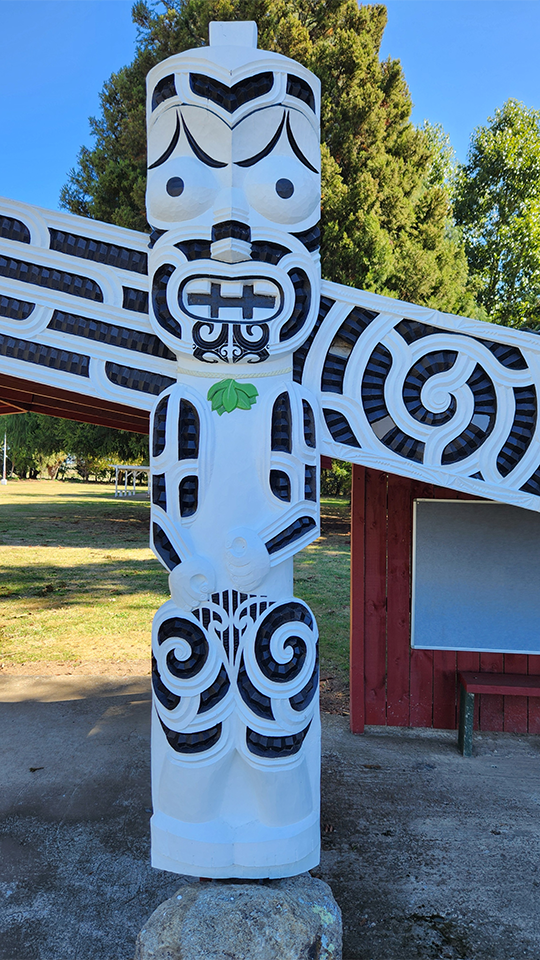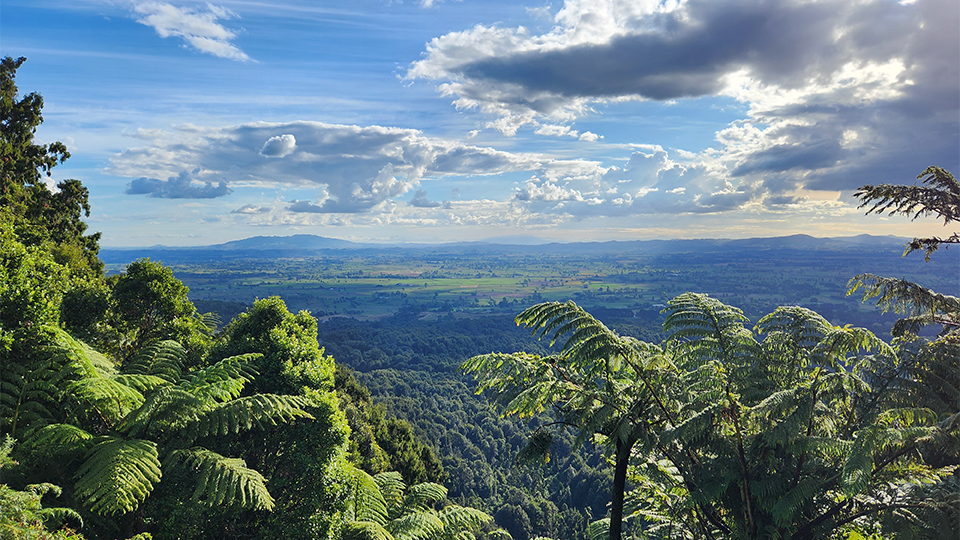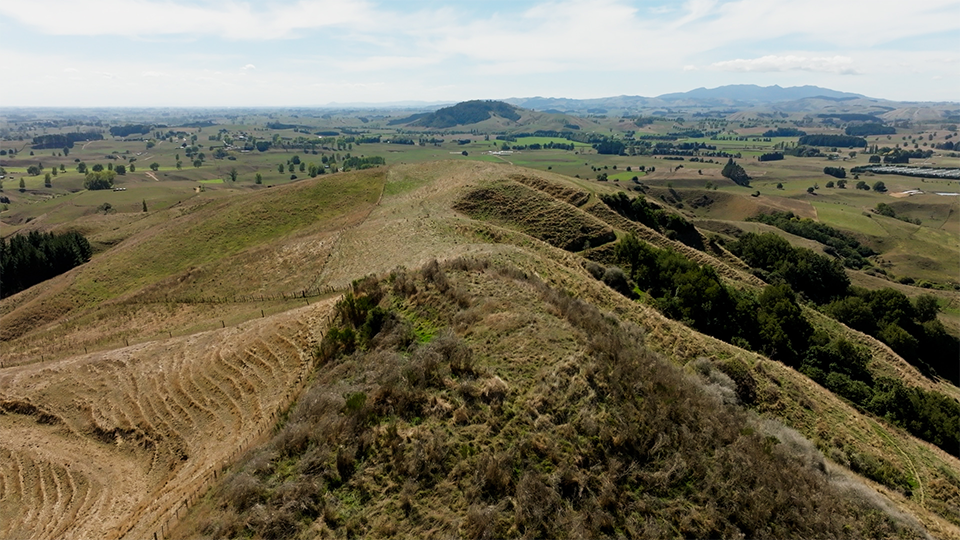← Origin stories discover more
On this field trip, we’ll be visiting a selection of locations related to the following narrative.
Once, a great chief named Tūrongo lived in Kāwhia on the West Coast of the North Island. Tūrongo came from a powerful family of the Tainui waka. But life wasn’t always easy, especially because he had a clever but competitive brother named Whatihua. The two brothers often clashed.
One day, Tūrongo was preparing to marry a woman he had been betrothed to - like an arranged marriage. But Whatihua tricked Tūrongo and convinced the woman to marry him instead. Heartbroken, Tūrongo left his home to find a new path. He journeyed across the island to the East Coast, to a place called Heretaunga, in the lands of the Tākitimu waka.

Tūrongo travelled to Heretaunga, where his skills and good work ethic caught the attention of Māhina-a-rangi. Image: LEARNZ.
There, Tūrongo heard of a beautiful and wise young woman named Māhina-a-rangi. She came from a high-ranking family and was the daughter of the chief Te Angiangi. Many chiefs wanted to marry her, but Tūrongo decided to win her heart, not with words, but through hard work.
When he arrived in her village, people were building a large meeting house. Tūrongo didn’t sit back – he helped with the building, hunting birds for food, and even showed his skill at carving and splitting timber. Te Angiangi noticed his talents and said to his daughter, “You should marry Tūrongo. He is a good provider.”
Māhina-a-rangi noticed Tūrongo too. Every night, she would secretly meet him as he walked back to where he slept. Tūrongo didn’t know who the mysterious woman was, but he remembered the sweet perfume she wore, made from the raukawa plant. Eventually, their relationship became known to all, and the people agreed they should marry.

Māhina-a-rangi wore a perfume that was made from the raukawa plant. Image: LEARNZ.
Their union was not just about love; it was also a powerful connection between the peoples of the West and East. Māhina-a-rangi soon became pregnant, and it was decided that she would give birth in the home of Tūrongo at Rangiātea, in the Tainui waka area.
Tūrongo went ahead first to prepare a house for his wife and child. Later, Māhina-a-rangi and her people began the long journey across the land. It was a journey full of hospitality and kindness from the communities they passed through. But it was also hard, especially as Māhina-a-rangi was heavily pregnant.
As they crossed the Kaimai Ranges, Māhina-a-rangi went into labour. She gave birth to a baby boy at a place called Whenua-a-kura. After the birth, she fed him at a site now remembered in the name Ūkaipō, which means ‘the source of nourishment’, and symbolises home and belonging.

A view from the Kaimai Ranges, near Whenua-a-kura where Māhina-a-rangi gave birth. Image: LEARNZ.
After recovering, Māhina-a-rangi continued the journey and finally reached the Waikato River. When she was near, a dog that Tūrongo had given her, named Waitete, ran ahead to find him. When Tūrongo saw Waitete, he knew his wife and baby were close. He rushed to meet them, full of joy.
He brought Māhina-a-rangi and their people to their new home at Rangiātea. There, in a sacred ceremony called a tohi, their baby was given the name Raukawa, after the fragrant oil that Māhina-a-rangi had worn during their secret meetings. The scent of love, connection, and heritage.
Raukawa grew to become a great ancestor, and today many people proudly trace their whakapapa back to him. The iwi of Raukawa carry his name, honouring the love story, strength, and journey of his parents, Tūrongo and Māhina-a-rangi.

A view from atop the pā in Rangiātea. Imagine what the surrounding landscape was like when Raukawa grew up here. Image: LEARNZ.
Māori kupu | key words
rangatira | chief
hīkoi | journey
tupuna / tūpuna | ancestor / ancestors
whakapapa | genealogy
tohi | baptism rite
kāinga | village
hapū | to be pregnant / sub-tribe
whare rūnanga | meeting house
kurī | dog
Sources:
- J. Hutton. (2009). Raukawa Traditional History Summary Report.
- Storymaps | Pūrakau mapping: Mapping the narratives and stories of our landscape



